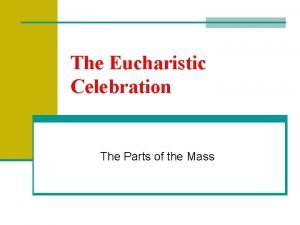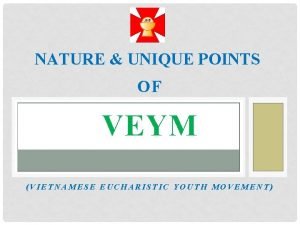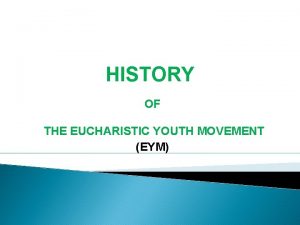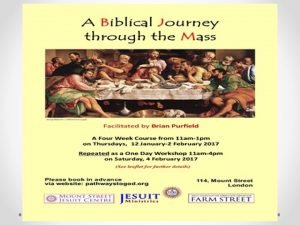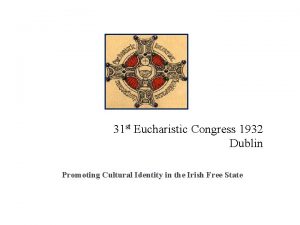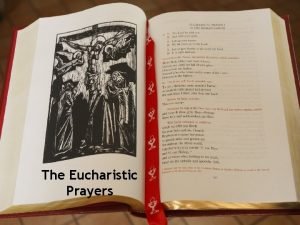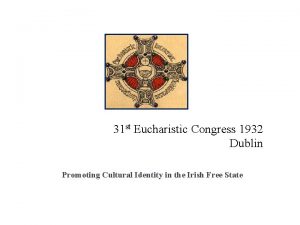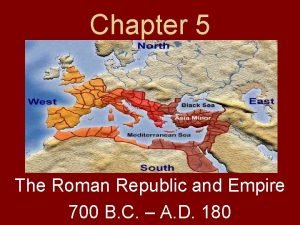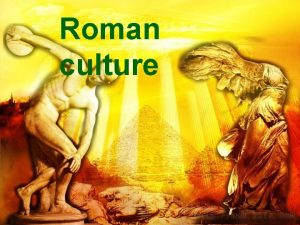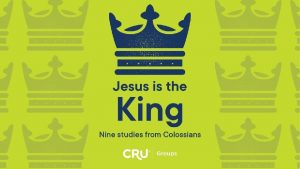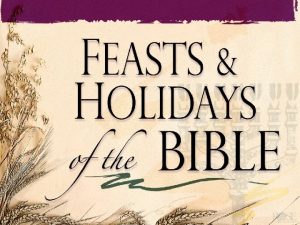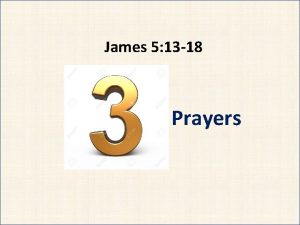The Eucharistic Prayers The Eucharistic Prayerss The Roman













- Slides: 13

The Eucharistic Prayers




The Eucharistic Prayers(s) The Roman Canon was solely used by the Roman Rite until Vatican II The three new prayers are shorter that EPI They put a stronger emphasis on the Holy Spirit’s role in Transubstantiation. EPII – EPIV allow the people to interact more in during the prayer than they do in EPI All are Trinitarian in nature

There are four Eucharistic Prayers That are used throughout the Liturgical Year. Eucharistic Prayer I: The Roman Canon dates back to the 5 th Century Eucharistic Prayer II: St. Hippolytus in the 3 rd Century Eucharistic Prayer III: Used most often Eucharistic Prayer IV: St. Basil in the 4 th Century

Eucharistic Prayer I: The Roman Canon The longest of the Eucharistic Prayers At one point it was the only Eucharistic Prayer used in the Western Church From the 11 th Century to 1969 Highly regarded for its theological precision, Biblical and Christian terminology Follows the Gospel of Matthew Strong sense of the Church of Messianic Fulfillment

The Roman Canon 92. then the priest, with hands extended, says: Therefore, o lord, as we celebrate the memorial of the blessed Passion, the Resurrection from the dead, and the glorious ascension into heaven of Christ, your son, our lord, we, your servants and your holy people, offer to your glorious majesty from the gifts that you have given us, this pure victim, this holy victim, this spotless victim, the holy Bread of eternal life and the Chalice of everlasting salvation.

The Roman Canon Proper Inserts

Eucharistic Prayer II: St. Hippolytus Dates back to 215 A. D. and comes from the text of Hippolytus It is the shortest EP is used mostly for weekdays, Children’s Masses, and small groups of people

Eucharistic Prayer III Theme of sacrifice and the Holy Spirit Theology of Sacrifice is developed in the memorial offering and communion innvocations We offer to God simple Bread and Wine that He has given to us (symbols of ourselves), and in return Jesus is returned to us as a sacrifice for us. Regarded as the Eucharistic Prayer of Vatican II Likened to the Gospel of Luke

Eucharistic Prayer IV: St. Basil Longest of the three newer Eps Though still considerably shorter than the Roman Canon A synthetic presentation of the total movement of the History of Salvation Gives the best picture of the Trinity God created Man kind Jesus Christ came for the salvation of Mankind The Holy Spirit complete His work on earth

Eucharistic Prayers for Special Masses of Reconciliation EP I – forgiveness of sin EP II – reconciliation with Scriptural allusions Masses for Children EP I – Emphasis on Thanksgiving and simplest of the three EP II – Mystery of God’s love EP III – Stir up attention and enrich prayer Solemnities and High Masses of the Liturgical Year Roman Canon
 Parts of the eucharistic celebration
Parts of the eucharistic celebration Eucharistic youth movement
Eucharistic youth movement Eucharistic youth movement
Eucharistic youth movement The eucharistic prayer
The eucharistic prayer What is the eucharistic prayer
What is the eucharistic prayer Memorial acclamation
Memorial acclamation Eucharistic congress dublin 1932
Eucharistic congress dublin 1932 Hippolytus eucharistic prayer
Hippolytus eucharistic prayer Penitential rite prayer
Penitential rite prayer Eucharistic congress dublin 1932
Eucharistic congress dublin 1932 Politheistic
Politheistic Roman republic vs roman empire
Roman republic vs roman empire Prayers for church leaders
Prayers for church leaders What is petition and intercession prayer
What is petition and intercession prayer
